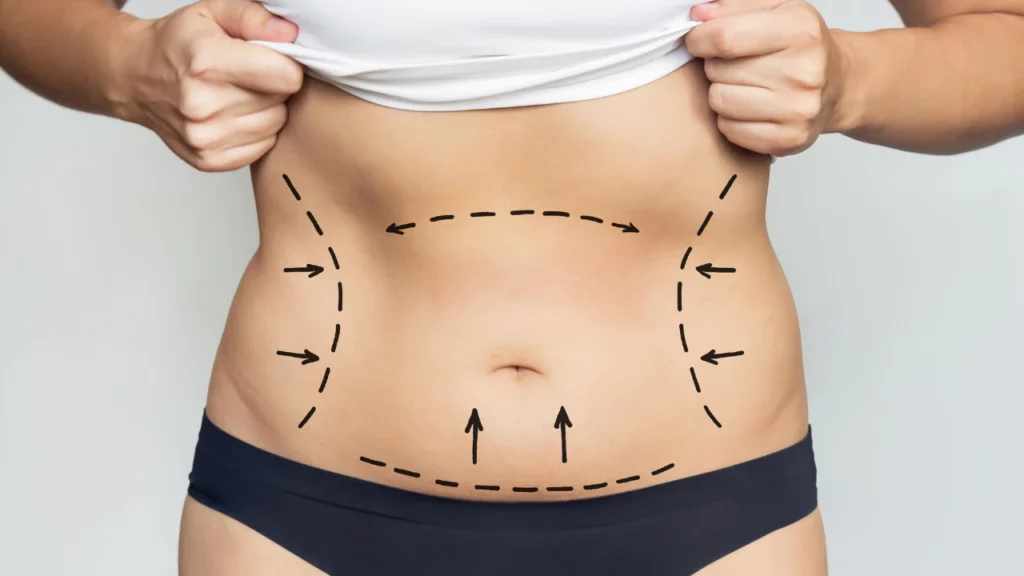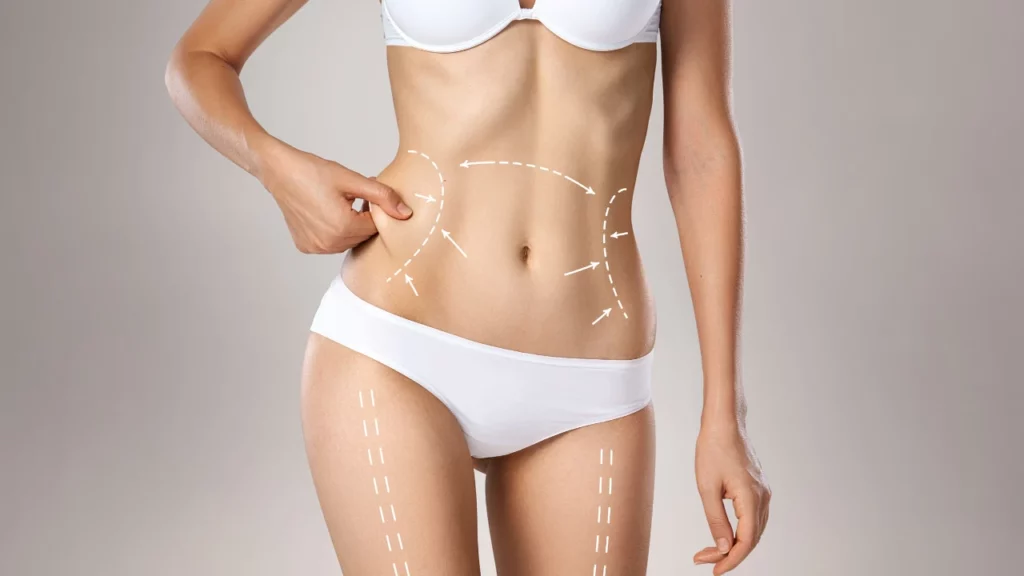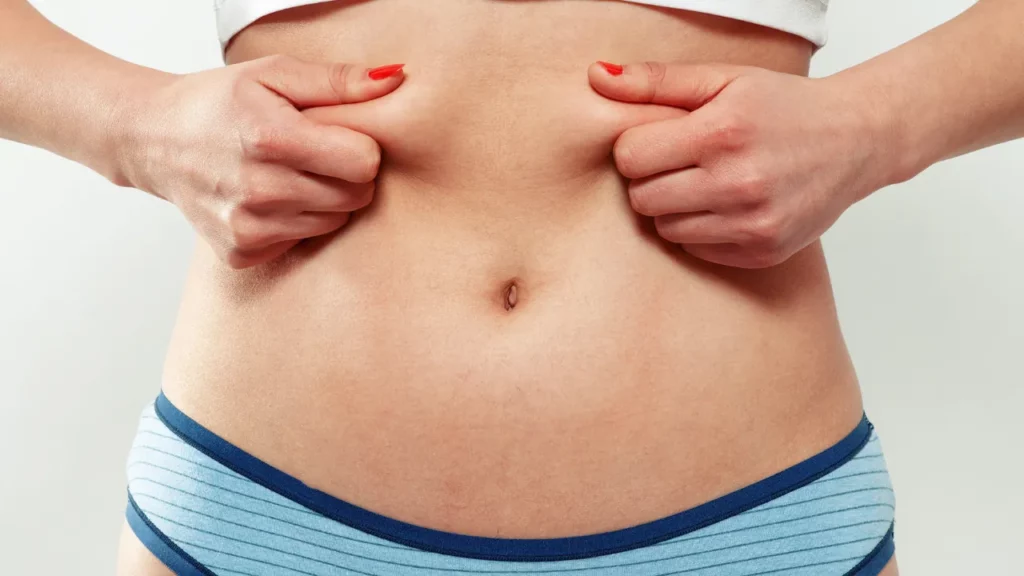Many tummy tuck patient may notice lumps in the abdominal area after the surgery. Hard lump under tummy tuck is a major concern. However, it should be known that fats and tissues are displaced with tummy tuck. For this reason, it is natural to see some lumps.

Seroma after liposuction or tummy tuck is one of the most potential causes of lumps. As the stitches begin to dissolve, fluid may collect between the skin and muscles. If you are under your doctor’s care, you do not need to worry about hard lumps and seroma.
What is hard lump under tummy tuck incision?
Hard lump under tummy tuck incision is one of the common conditions seen after surgery. When the tissues in the abdomen are tightened during treatments such as liposuction, the body react. As a result of this reaction, hard lump formation occurs in the abdominal area.
What the body does after surgery is actually to support the surgery area with collagen. When pressed on the resulting hard lump, it can be easily seen that they are sensitive. When the body completes the remodeling phase, the hard lump gradually disappears.
Hard lump under tummy tuck can cause potential complications, although it is rare. Seroma after liposuction is not one of them. If you have concerns about the changes in your body, you should meet with your surgeon and share your worries in the most descriptive way.
What causes hard lump after tummy tuck?
Even though hard lump under tummy tuck incision may be uncomfortable, it is important to note that the lumps are benign. If you understand why they occur, you will significantly alleviate your concerns. The most common potential culprit is seroma from liposuction.
- Seroma is the accumulation of fluid in the surgical area. The reason for its formation is the improper evacuation of the surgical area. It is much more common after liposuction.
- As the body’s healing process continues, tissue thickening may occur. If the incisions do not heal cleanly, hard lump under tummy tuck may occur.
- When liposuction is performed aggressively, hard lump after tummy tuck may occur. This is because dying fatty tissues harden and calcify under the skin.
- Blood accumulation may occur at points where there are tissue planes. There are different factors that affect clotting. Using aspirin after surgery is one of them.
- In surgeries where modern techniques are not used, stitches may remain on the skin. A hard lump under tummy tuck occurs when the stitches cause a reaction.
- When liposuction is performed in a very voluminous manner, lymph flow may be impaired. If the process is not managed properly, various problems may occur.
The drainage protocol after tummy tuck or liposuction must be strictly followed. The protocols prevent the formation of hard lump under tummy tuck incision. Regular dressing and gentle massage moves when necessary can reduce seroma formation.

Symptoms of hard lumps after tummy tuck
Hard lump under tummy tuck may not be noticed quickly. In general, pain, extreme sensitivity and discomfort in the surgery area are the most important symptoms. Hard lump under tummy tuck resembles round but attracts attention with their irregular shape.
- Lump appearance: Hard lumps may appear in a round shape under the skin. Their shapes are irregular and they tend to shrink over time. Hardened tissue after tummy tuck may occasionally compress the skin by pressing upwards.
- Persistent pain: A hard lump under tummy tuck can cause persistent pain before it shows signs of full recovery. You may experience cramps and sharp pains for weeks. This is due to the accumulation of scar tissue under the skin.
- Skin changes: Hard lump under tummy tuck may cause skin changes. The pressure of the lump on the skin can make it appear thicker than it is. If it continues for too long, the skin may begin to irritate the underlying tissue.
Hardened tissue after tummy tuck must be kept under control. Because it may be difficult to predict what additional problems it will create. Even though it disappears as the body heals, it is always very important to be careful about risks such as infection.
What is seroma after liposuction?
Seroma is the accumulation of fluid in the spaces left under the skin after liposuction. The body strives to disperse this fluid as it continues the healing process. It hardens as the body absorbs the liquid. The factors that cause seroma formation vary.
Seroma from liposuction disappears naturally after the body begins to strengthen itself. Sometimes your surgeon may recommend gentle compression. In such cases, you should get support from your surgeon. Because some fluid accumulations can be very large.
The relationship between liposuction and seroma is related to the high-volume surgery. The deeper the surgical intervention is performed, the more problems will occur under the skin. The depth of liposuction increases the likelihood of seroma after liposuction.
Causes and risk factors for seromas from liposuction
Seroma after liposuction may occur for certain reasons, but your surgeon must have the ability to control all factors. In general, the larger the area where liposuction is performed, the more likely it is to develop a seroma or hard lump under tummy tuck.
- One of the most important factors causing seroma formation is the process of fat cells. Fat cells die and the body absorbs the dead fat cells into scar tissue. While doing this, it hardens the scar tissue and lump formation is observed.
- If the stitches are placed too tightly after liposuction and remain for too long, seroma may occur. This represents the body’s natural response. Removing stitches and applying appropriate dressings minimizes the risk.
- One of the factors in the formation of hard lump under tummy tuck and seroma is the accumulation of minerals in fat necrosis areas. When minerals accumulate, the bumps become harder and can be noticed more easily.
It is possible to minimize the risks of seroma or hard lump under tummy tuck formation. Your surgeon’s ability to perform liposuction is key. The surgeon must check your weight before the operation. Ensuring fluid control during liposuction is another important step.

Symptoms of seroma formation after liposuction
Seroma formation is a factor that requires at least as much attention as hardened tissue after tummy tuck. The formation of a fluid pocket may be manifested by a lump. If you feel uncomfortable about many things, you should try to get medical support.
- Fluid-filled lumps and swelling may appear under the skin. The swelling may feel soft depending on your body position. You may notice that there is liquid inside.
- When a hard lump under tummy tuck incision occurs, you will feel warmth under the skin. This temperature is a potential indicator of inflammation.
- Fluid levels in the seroma area vary and the fluid may fluctuate. There may be differences in the appearance of the resulting swelling.
- You may feel skin tension at the point where the hard lump under tummy tuck occurs. Fluid accumulation can cause sensations such as tension and tightness.
- Inflammatory cells near the area where seroma occurs may cause a certain level of redness. Inflammation must be controlled to relieve redness.
- Since seroma can cause pain, tenderness occurs in the area where the hard lump under tummy tuck is seen. You may feel some pain when you gently press on the lump.
Seroma from lipusoction should be closely monitored. Fluid accumulation can be treated quickly, but ignoring it is a big risk. If you experience swelling and pain after liposuction, you should consult your surgeon to find the easiest solution.
Preventing seromas formation from liposuction
Seroma formation after liposuction is a common condition. You can consider this as a kind of side effect. To prevent seroma formation, you should try to closely follow all the recommendations given to you after the surgery and wear a compression garment.
If you encounter seroma despite preventive measures, you may want to consider some treatment options. There is no need for major interventions for small pockets of fluid. If the problem is a little bigger and there is an infection, antibiotics may be prescribed.
How to seek medical advice for hard lumps?
If you have had liposuction, you may see a lump in your abdominal area. Lump formation may be part of the healing process but should be observed carefully. If the hard lump under tummy tuck is getting bigger, you need to consult your surgeon as soon as possible.
Your surgeon should have provided you with all the information you need after surgery. Even if the lump is not unexpected, caution is necessary. Because it is important to be examined by your surgeon to clarify the condition. Imaging such as ultrasound may be needed.
Ultrasound results can clarify whether there is a hard lump under tummy tuck. You can also find out if there is an infection in the lump. With timely intervention, your surgeon can prevent the lump from causing bigger problems like inflammation.


